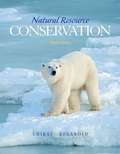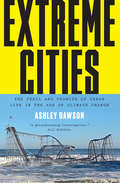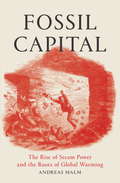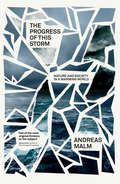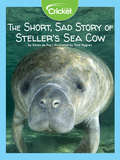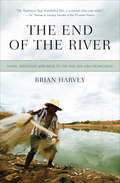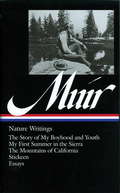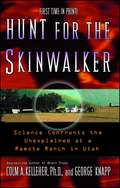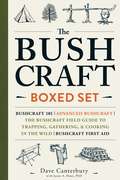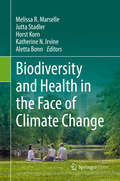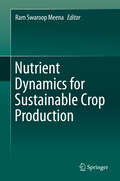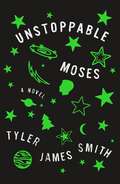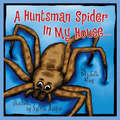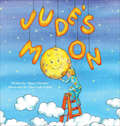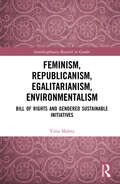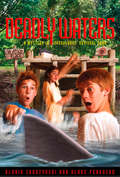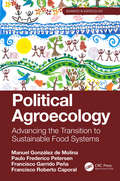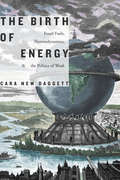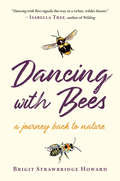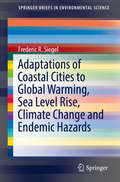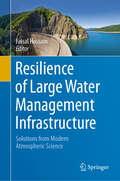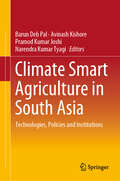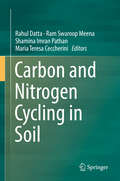- Table View
- List View
Float
by Daniel Miyares<p>A boy’s small paper boat—and his large imagination—fill the pages of this wordless picture book, a modern-day classic from the creator of Pardon Me! that includes endpaper instructions for building a boat of your own. <p>A little boy takes a boat made of newspaper out for a rainy-day adventure. The boy and his boat dance in the downpour and play in the puddles, but when the boy sends his boat floating down a gutter stream, it quickly gets away from him. <p>So of course the little boy goes on the hunt for his beloved boat—and when the rain lets up, he finds himself on a new adventure altogether. <p>This seemingly simply story from Daniel Miyares is enriched with incredible depth and texture that transcend words.</p>
Natural Resource Conservation: Management For A Sustainable Future
by Daniel Chiras John ReganoldThis comprehensive book describes the ecological principles, policies, and practices required to create a sustainable future. It emphasizes practical, cost-effective, sustainable solutions to these problems that make sense from social, economic, and environmental perspectives. A focus on sustainable development puts readers in touch with one of the most significant shifts in thinking and action in the environmental and resource management arenas. A variety of lasting solutions are provided that make sense from social, economic, and environmental viewpoints.
Extreme Cities: The Peril and Promise of Urban Life in the Age of Climate Change
by Ashley DawsonA cutting exploration of how cities drive climate change while being on the frontlines of the coming climate crisisHow will climate change affect our lives? Where will its impacts be most deeply felt? Are we doing enough to protect ourselves from the coming chaos? In Extreme Cities, Ashley Dawson argues that cities are ground zero for climate change, contributing the lion’s share of carbon to the atmosphere, while also lying on the frontlines of rising sea levels. Today, the majority of the world’s megacities are located in coastal zones, yet few of them are adequately prepared for the floods that will increasingly menace their shores. Instead, most continue to develop luxury waterfront condos for the elite and industrial facilities for corporations. These not only intensify carbon emissions, but also place coastal residents at greater risk when water levels rise.In Extreme Cities, Dawson offers an alarming portrait of the future of our cities, describing the efforts of Staten Island, New York, and Shishmareff, Alaska residents to relocate; Holland’s models for defending against the seas; and the development of New York City before and after Hurricane Sandy. Our best hope lies not with fortified sea walls, he argues. Rather, it lies with urban movements already fighting to remake our cities in a more just and equitable way.As much a harrowing study as a call to arms Extreme Cities is a necessary read for anyone concerned with the threat of global warming, and of the cities of the world.
Fossil Capital: The Rise of Steam Power and the Roots of Global Warming
by Andreas MalmHow capitalism first promoted fossil fuels with the rise of steam powerThe more we know about the catastrophic implications of climate change, the more fossil fuels we burn. How did we end up in this mess? In this masterful new history, Andreas Malm claims it all began in Britain with the rise of steam power. But why did manufacturers turn from traditional sources of power, notably water mills, to an engine fired by coal? Contrary to established views, steam offered neither cheaper nor more abundant energy--but rather superior control of subordinate labour. Animated by fossil fuels, capital could concentrate production at the most profitable sites and during the most convenient hours, as it continues to do today. Sweeping from nineteenth-century Manchester to the emissions explosion in China, from the original triumph of coal to the stalled shift to renewables, this study hones in on the burning heart of capital and demonstrates, in unprecedented depth, that turning down the heat will mean a radical overthrow of the current economic order.From the Trade Paperback edition.
The Progress of This Storm: Nature and Society in a Warming World
by Andreas MalmAn attack on the idea that nature and society are impossible to distinguish from each otherIn a world careening towards climate chaos, nature is dead. It can no longer be separated from society. Everything is a blur of hybrids, where humans possess no exceptional agency to set them apart from dead matter. But is it really so? In this blistering polemic and theoretical manifesto, Andreas Malm develops a counterargument: in a warming world, nature comes roaring back, and it is more important than ever to distinguish between the natural and the social. Only with a unique agency attributed to humans can resistance become conceivable.
The Short, Sad Story of Steller's Sea Cow
by Karen De FoyThe Steller's sea cow, a cousin to the manatee, was hunted to extinction just 27 years after it was discovered. Another century passed before humans realized the need to preserve endangered species. Today scientists are working to ensure its cousin, the Florida manatee, doesn’t meet the same fate.
The Mitten
by Jan Brett<p>A bestselling modern classic that has been a family favorite for over 25 years. <p>When Nicki drops his white mitten in the snow, he goes on without realizing that it is missing. <p>One by one, woodland animals find it and crawl in; first, a curious mole, then a rabbit, a badger and others, each one larger than the last. Finally, a big brown bear is followed in by a tiny brown mouse and what happens next makes for a wonderfully funny climax. <p>In her distinctive style, Jan Brett brings the animals to life with warmth and humor, and her illustrations are full of visual delights and details faithful to the Ukrainian tradition from which the story comes.</p>
The End of the River: Dams, Drought and Déjà Vu on the Rio São Francisco
by Brian Harvey“[Harvey] may have created a new literary genre: science travel writing . . . travelogue, autobiography, history, and even fantasy romp alongside the biology” (Quill & Quire). When biologist Brian Harvey saw a thousand fish blundering into a Brazilian dam, he asked the obvious: What’s going to happen to them? The End of the River is the story of his long search for an answer. Harvey takes readers from a fisheries patrol boat on the Fraser River to the great Tsukiji fish market in Japan, with stops in the Philippines, Thailand, and assorted South American countries. Finally, in the arid outback of northeast Brazil, against a backdrop of a multi-billion-dollar river project nobody seems to want, he finds a small-scale answer to his simple question. In recounting his journey, he populates his story with characters both real and imagined, human and otherwise—a six-foot endangered catfish; a Canadian professor with a weakness for Thai bar girls; a chain-smoking Brazilian with a passion for her river; a drug-addled stick-up artist. The End of the River is about fishermen, fish farmers, and fish cops; there are scientists and shysters as well as a few Colombian narcotráficos and some very drunk, very hairy Brazilian men in thongs. From the founder of the World Fisheries Trust, Harvey introduces a new kind of writing about the environment, as far off the beaten track as you can get in a Land Rover driven by a female Colombian biologist whose favorite expression is “No hay via!”—meaning, “no road!” “[A] freewheeling and vividly written essay on the mysteries and longings of what it is to be human in a world of cynicism and loss—and more significantly, what it is to be hopeful, to persevere, in the search for redemption and beauty . . . A brilliant and instructive book . . . recalls the travel writing of one of Harvey’s heroes, Sir Richard Burton.” —The Globe and Mail (Toronto)
Muir: Nature Writings
by John Muir William CrononIn a lifetime of exploration, writing, and passionate political activism, John Muir made himself America's most eloquent spokesman for the mystery and majesty of the wilderness. A crucial figure in the creation of our national parks system and a visionary prophet of environmental awareness, he was also a master of natural description who evoked with unique power and intimacy the untrammeled landscapes of the American West. Nature Writings collects his most significant and best-loved works in a single volume. The Story of My Boyhood and Youth (1913) is Muir's account of growing up by the sea in Scotland, of coming to America with his family at age eleven, and of his early fascination with the natural world. My First Summer in the Sierra (1911) is his famous account of the spiritual awakening he experienced when, 1869, he first encountered the mountains and valleys of central California. The Mountains of California (1894) draws on half a lifetime of exploration of the high Sierra country to celebrate and evoke the region's lakes, forests, flowers, and animals in a masterpiece of observation and poetic description. Also included are the widely popular "Stickeen" (1909), Muir's affectionate story of an adventure with a dog in Alaska, and a rich selection of essays - including "Yosemite Glaciers", "God's First Temples", "Snow-Storm on Mount Shasta", "The American Forests", and the late appeal "Save the Redwoods" - highlighting various aspects of his career: his exploration of what became Yosemite and Yellowstone national parks and the Grand Canyon, his successful crusades to preserve the wilderness, his early walking tour to Florida, and the Alaska journey of 1879.
Hunt for the Skinwalker: Science Confronts the Unexplained at a Remote Ranch in Utah
by Colm A. Kelleher George KnappThe author of the controversial bestseller Brain Trust brings his scientific expertise to the chilling true story of unexplained phenomena on Utah's Skinwalker Ranch -- and challenges us with a new vision of reality. For more than fifty years, the bizarre events at a remote Utah ranch have ranged from the perplexing to the wholly terrifying. Vanishing and mutilated cattle. Unidentified Flying Objects. The appearance of huge, otherworldly creatures. Invisible objects emitting magnetic fields with the power to spark a cattle stampede. Flying orbs of light with dazzling maneuverability and lethal consequences. For one family, life on the Skinwalker Ranch had become a life under siege by an unknown enemy or enemies. Nothing else could explain the horrors that surrounded them -- perhaps science could. Leading a first-class team of research scientists on a disturbing odyssey into the unknown, Colm Kelleher spent hundreds of days and nights on the Skinwalker property and experienced firsthand many of its haunting mysteries. With investigative reporter George Knapp -- the only journalist allowed to witness and document the team's work -- Kelleher chronicles in superb detail the spectacular happenings the team observed personally, and the theories of modern physics behind the phenomena. Far from the coldly detached findings one might expect, their conclusions are utterly hair-raising in their implications. Opening a door to the unseen world around us, Hunt for the Skinwalker is a clarion call to expand our vision far beyond what we know.
The Bushcraft Boxed Set: Bushcraft 101; Advanced Bushcraft; The Bushcraft Field Guide to Trapping, Gathering, & Cooking in the Wild; Bushcraft First Aid (Bushcraft)
by Dave Canterbury Ph.D. Jason A. HuntThe Bushcraft Boxed Set brings together four titles from wilderness expert and New York Times bestselling author Dave Canterbury.The collection includes: Bushcraft 101: The primer to wilderness survival based on the author’s 5Cs of Survivability (cutting tools, covering, combustion devices, containers, and cordages) Advanced Bushcraft: Takes it to the next level with self-reliance skills that teach you how to survive with little to no equipment The Bushcraft Guide to Trapping, Gathering, and Cooking in the Wild: Provides everything you need to know about packing, finding, and preparing food while trekking Bushcraft First Aid: Written with Jason A. Hunt, PhD, it’s the go-to first aid resource for anyone headed into the woods With this boxed set, you’ll be prepped and ready for your next outdoor adventure—wherever it takes you!
Biodiversity and Health in the Face of Climate Change
by Aletta Bonn Horst Korn Jutta Stadler Melissa R. Marselle Katherine N. IrvineThis open access book identifies and discusses biodiversity’s contribution to physical, mental and spiritual health and wellbeing. Furthermore, the book identifies the implications of this relationship for nature conservation, public health, landscape architecture and urban planning – and considers the opportunities of nature-based solutions for climate change adaptation. This transdisciplinary book will attract a wide audience interested in biodiversity, ecology, resource management, public health, psychology, urban planning, and landscape architecture. The emphasis is on multiple human health benefits from biodiversity - in particular with respect to the increasing challenge of climate change. This makes the book unique to other books that focus either on biodiversity and physical health or natural environments and mental wellbeing. The book is written as a definitive ‘go-to’ book for those who are new to the field of biodiversity and health.
Nutrient Dynamics for Sustainable Crop Production
by Ram Swaroop MeenaThe cropping system is one of the important components of sustainable agriculture, since it provides more efficient nutrient cycling. As such, balanced fertilization must be based on the concept of sustainable crop production. Feeding the rapidly growing world population using environmentally sustainable production systems is a major challenge, especially in developing countries. A number of studies have highlighted the fact that degradation of the world's cultivated soils is largely responsible for low and plateauing yields. Soil is lost rapidly but only formed over millennia, and this represents the greatest global threat to nutrient dynamics in agriculture. This means that nutrient management is essential to provide food and nutritional security for current and future generations. Nutrient dynamics and soil sustainability imply the maintenance of the desired ecological balance, the enhancement and preservation of soil functions, and the protection of biodiversity above and below ground. Understanding the role of nutrient management as a tool for soil sustainability and nutritional security requires a holistic approach to a wide range of soil parameters (biological, physical, and chemical) to assess the soil functions and nutrient dynamics of a crop management system within the desired timescale. Further, best nutrient management approaches are important to advance soil sustainability and food and nutritional security without compromising the soil quality and productive potential. Sustainable management practices must allow environmentally and economically sustainable yields and restore soil health and sustainability. This book presents soil management approaches that can provide a wide range of benefits, including improved fertility, with a focus on the importance of nutrient dynamics. Discussing the broad impacts of nutrients cycling on the sustainability of soil and the cropping systems that it supports, it also addresses nutrient application to allow environmentally and economically sustainable agroecosystems that restore soil health. Arguing that balanced fertilization must be based on the concept of INM for a cropping system rather than a crop, it provides a roadmap to nutrient management for sustainability. This richly illustrated book features tables, figures and photographs and includes extensive up-to-date references, making it a valuable resource for policymakers and researchers, as well as undergraduate and graduate students of Soil Science, Agronomy, Ecology and Environmental Sciences.
Unstoppable Moses: A Novel
by Tyler James SmithMoses and his cousin Charlie were best friends, wisecracking pranksters, unstoppable forces of teenage energy—until the night they became accidental arsonists and set in motion a chain of events that left Moses alone, guilt-stricken, and most likely trapped in his dead-end town. Then Moses gets a lucky break: the chance to volunteer as a camp counselor for week and prove that the incident at the bowling alley should be expunged from his record. And since a criminal record and enrollment at Duke are mutually exclusive, he’s determined to get through his community service and get on with his life. But tragedy seems to follow him wherever he goes, and this time, it might just stop him in his tracks.
A Huntsman Spider In My House . . .
by Michelle Ray“Delightful and charming . . . Deliver[s] a valuable lesson on treating all such creatures with respect, without falling into the trap of being preachy.” —Kiddiespace A Huntsman Spider in My House features a young girl concerned about the huge unwelcome guest in her room. Rather than reacting by immediately killing the spider, as commonly taught by society, she finds another way: She catches the Huntsman instead, and then releases it outside to let it live and contribute to the ecosystem of Australian fauna. The little girl’s actions show that insects are important, necessary, not so scary, and support the world too. “The young, nameless female protagonist of Sylvie Ashford’s charming book speaks in rhyme as she explains the habits of Huntsman Spiders to children as well as to the adults that read the book aloud . . . We thoroughly endorse educating young children to have more tolerance for the lower beasts.” —What’s That Bug? “The story follows her beautifully simplistic childlike thought process as she explores her feelings about it, and the ways in which the spider could be dealt with . . . It leaves you with a deep sense of satisfaction, and provides a practical fear-resolution solution to which kids of all ages can relate.” —Kiddiespace “Michelle Ray, author of A Huntsman Spider in My House, does a wonderful job weaving a story to teach young children not to be afraid.” —The Education Cafe
Jude's Moon
by Nancy GuettierNighttime is the best time for a boy and his best friend in this charming tale from the author of Circus in the Sky and Mermaids on Mars. Jude’s Moon is a delightful story of a little boy who is fascinated by the moon. He believes he is the only one who can see it, so he is always so excited to point it out to his mom. “There’s the moon!” he shouts with glee every time he sees it. One day Jude is confused when the moon changes shape. He thinks someone has stolen his moon and replaced it with a croissant. When he learns it is a crescent moon, he is even more curious to learn how it changes shapes. This story is a fun and easy way to educate children on the phases of the moon. “I recommend this book to kids that love science, teachers that want to teach their class about moon phases and parents that love to read with their kids.” —5 Girls Book Reviews “In Jude’s Moon, Jude loves the moon so much that he believes he is the one who hung it in the sky. Throughout the story, Jude examines the phases of the moon, as well as fun facts about the sun.” —MySocialGoodNews.com
Feminism, Republicanism, Egalitarianism, Environmentalism: Bill of Rights and Gendered Sustainable Initiatives (Interdisciplinary Research in Gender)
by Yulia MaletaThis book addresses hegemonic ruling class masculinity and emphasized femininity within renewables organisational governance, and critiques Anglo-Celtic male privilege, as a barrier to women’s leadership participation. Primarily using the Australian socio-political context, the author considers the patriarchal control of organisations and renewables governance, and argues that women-led emphasized femininity-resistance strategies can challenge the hegemonic status of ruling elites to create a leadership that is less power oriented, more collaborative and open to change. Utilising detailed interviews with Australian women environmentalists, together with feminist, sociological and social movement theory, whilst considering the historic context of Red Vienna and contemporary political challenges (Brexit, Monarchism etc.), it puts forward an innovative policy framework for an Australian Bill of Rights Act and republican constitutional change. Written for academics, activists and policymakers alike, this book offers a unique insight into women’s inequity within patriarchal institutionalist governance. It will be engaging and inspiring reading for feminist and environmentalist activists and practitioners, in addition to professional associations focussing on gender, justice and environmental change. Academics and postgraduates in Gender Studies, Ecofeminism, Sociology and Organisational Studies will also find the book of key interest in its interdisciplinary discussions of Sustainable Scientific-Technological Development Initiatives (SSTDI) and feminism in an Australian political context.
Deadly Waters: A Mystery in Everglades National Park (Mysteries in Our National Park)
by Gloria Skurzynski Alane FergusonThe Landon family is Southbound-headed for Florida to investigate a mysterious illness plaguing endangered manatees in Everglades National Park. Jack, Ashley, and their friend Bridger soon find themselves in deadly waters with a seven-foot shark, an injured manatee-and a mystery to solve. Who was the stranger in the speedboat who snatched Jack's camera? And what does he have to do with the manatees? Join the heart-stopping chase through a maze of mangrove islands to find out!
Political Agroecology: Advancing the Transition to Sustainable Food Systems (Advances in Agroecology)
by Manuel González de Molina Paulo Frederico Petersen Francisco Garrido Peña Francisco Roberto CaporalPolitical Agroecology is the first book to offer a systematic and articulated reflection on Political Agroecology from the Agroecological perspective. It defines the disciplinary field responsible for designing and producing actions, institutions and regulations aimed at achieving agrarian sustainability. In short, it aims to build a political theory that makes the scaling-up of agroecological experiences possible, turning them into the foundation of a new and alternative food regime. The book proposes theoretical, practical and epistemological foundations of a new theoretical and practical field of work for agroecologists: Political Agroecology. It establishes a framework for a common agroecological strategy, covering the different levels of collective action and the different instruments with which it can be developed. This will be essential reading for agroecologists, environmentalists, farming and food communities, and an ideal textbook for advanced agroecology courses in universities. Key features: Offers a unique state of the art on this fundamental new topic: Political Agroecology Presents a complete introduction to the political and institutional aspects of Agroecology, covering the whole food system Offers an important tool for searching agrarian sustainability Provides a broad epistemological, theoretical and methodological focus, exploring the connection between the different levels and scales involved in agroecological theory and practice
The Birth of Energy: Fossil Fuels, Thermodynamics, and the Politics of Work (Elements)
by Cara New DaggettIn The Birth of Energy Cara New Daggett traces the genealogy of contemporary notions of energy back to the nineteenth-century science of thermodynamics to challenge the underlying logic that informs today's uses of energy. These early resource-based concepts of power first emerged during the Industrial Revolution and were tightly bound to Western capitalist domination and the politics of industrialized work. As Daggett shows, thermodynamics was deployed as an imperial science to govern fossil fuel use, labor, and colonial expansion, in part through a hierarchical ordering of humans and nonhumans. By systematically excavating the historical connection between energy and work, Daggett argues that only by transforming the politics of work—most notably, the veneration of waged work—will we be able to confront the Anthropocene's energy problem. Substituting one source of energy for another will not ensure a habitable planet; rather, the concepts of energy and work themselves must be decoupled.
Dancing with Bees: A Journey Back to Nature
by Brigit Strawbridge HowardA naturalist’s passionate dive into the world of bees of all stripes--what she has learned about them, and what we can learn from them Brigit Strawbridge Howard was shocked the day she realised she knew more about the French Revolution than she did about her native trees. And birds. And wildflowers. And bees. The thought stopped her—quite literally—in her tracks. But that day was also the start of a journey, one filled with silver birches and hairy-footed flower bees, skylarks, and rosebay willow herb, and the joy that comes with deepening one’s relationship with place. Dancing with Bees is Strawbridge Howard’s charming and eloquent account of a return to noticing, to rediscovering a perspective on the world that had somehow been lost to her for decades and to reconnecting with the natural world. With special care and attention to the plight of pollinators, including honeybees, bumblebees, and solitary bees, and what we can do to help them, Strawbridge Howard shares fascinating details of the lives of flora and fauna that have filled her days with ever-increasing wonder and delight.
Adaptations of Coastal Cities to Global Warming, Sea Level Rise, Climate Change and Endemic Hazards (SpringerBriefs in Environmental Science)
by Frederic R. SiegelThis book discusses the identification of, solutions to, and management of threats to high population coastal cities and their seaports from global warming, climate change and endemic hazards. These include prevention of sea water intrusion of freshwater coastal aquifers, emplacement of barriers that mitigate the threats from sea level rise, and inundation of urban centers plus those from storm surges that cause flooding and salination of inshore terrain. The book assesses mitigation of the effects of extreme weather events such as drought, and major flooding from heavy rainfall on coastal urban centers, or on associated drainage basins. It also considers how coastal cities can counter vulnerabilities from other physical hazards (e.g., earthquakes - building codes) and health hazards (e.g., pollution, public health response - preparedness) that may be related to a city’s geological/geographical location and service as a port of entry for goods and travelers (regional and international). The book also cites the high costs of safeguarding citizen and municipal assets, but notes possible sources of potential funding especially from less developed and developing nations. The book is written to give strong background information to students majoring in environmental sciences or those in other majors with interests in the effects of global warming/climate change, and will be of interest to social scientists, think tank personnel, government planners, and lay persons in environmentally oriented organizations.
Resilience of Large Water Management Infrastructure: Solutions from Modern Atmospheric Science
by Faisal HossainInfrastructure that manages our water resources (such as, dams and reservoirs, irrigation systems, channels, navigation waterways, water and wastewater treatment facilities, storm drainage systems, urban water distribution and sanitation systems), are critical to all sectors of an economy. Realizing the importance of water infrastructures, efforts have already begun on understanding the sustainability and resilience of such systems under changing conditions expected in the future. The goal of this collected work is to raise awareness among civil engineers of the various implications of landscape change and non-climate drivers on the resilience of water management infrastructure. It identifies the knowledge gaps and then provides effective and complementary approaches to assimilate knowledge discovery on local (mesoscale)-to-regional landscape drivers to improve practices on design, operations and preservation of large water infrastructure systems.
Climate Smart Agriculture in South Asia: Technologies, Policies and Institutions
by Barun Deb Pal Avinash Kishore Pramod Kumar Joshi Narendra Kumar TyagiThis book discusses various climate smart agro-technologies, their technical and economic feasibility across heterogeneous agro-climatic conditions, assessing farmers’ willingness to adopt those technologies, impact of climate smart technology in agricultural production and possible policy and investment opportunities to upscale it. Containing eight chapters, the book starts with a discussion about the methodological aspects of priority setting of the farm technologies across various regions of South Asia including Eastern Indo-Gangetic plain, Western Indo-Gangetic Plain and arid regions. Using data from field based trials and expert solicitations, the book next deliberates on a list of feasible technologies, assessed by constructing climate smart Feasibility Index. Further on, there is an analysis, using stated preference method, of the behaviour of farmers in adopting climate smart technologies. Preference of women farmers has been given a special focus in this book. After discussing the method priority setting of the farm technologies, impact of climate smart technologies has been analysed using real time data. Government policies have been reviewed with the view of achieving climate smart agriculture in South Asia. The book also describes the optimization modelling framework for investment allocation and technology prioritization. The model integrates both the bio-physical and the economic optimization model to capture the agro-climatic heterogeneity within the region and the variability of technical feasibility across regions and crops. Results of this model will help policy makers to identify how much to invest, where to invest and what technologies to prioritize for investments.
Carbon and Nitrogen Cycling in Soil
by Rahul Datta Ram Swaroop Meena Shamina Imran Pathan Maria Teresa CeccheriniSeveral textbooks and edited volumes are currently available on general soil fertility but‚ to date‚ none have been dedicated to the study of “Sustainable Carbon and Nitrogen Cycling in Soil.” Yet this aspect is extremely important, considering the fact that the soil, as the ‘epidermis of the Earth’ (geodermis)‚ is a major component of the terrestrial biosphere. This book addresses virtually every aspect of C and N cycling, including: general concepts on the diversity of microorganisms and management practices for soil, the function of soil’s structure-function-ecosystem, the evolving role of C and N, cutting-edge methods used in soil microbial ecological studies, rhizosphere microflora, the role of organic matter (OM) in agricultural productivity, C and N transformation in soil, biological nitrogen fixation (BNF) and its genetics, plant-growth-promoting rhizobacteria (PGPRs), PGPRs and their role in sustainable agriculture, organic agriculture, etc. The book’s main objectives are: (1) to explain in detail the role of C and N cycling in sustaining agricultural productivity and its importance to sustainable soil management; (2) to show readers how to restore soil health with C and N; and (3) to help them understand the matching of C and N cycling rules from a climatic perspective.Given its scope, the book offers a valuable resource for educators, researchers, and policymakers, as well as undergraduate and graduate students of soil science, soil microbiology, agronomy, ecology, and the environmental sciences. Gathering cutting-edge contributions from internationally respected researchers, it offers authoritative content on a broad range of topics, which is supplemented by a wealth of data, tables, figures, and photographs. Moreover, it provides a roadmap for sustainable approaches to food and nutritional security, and to soil sustainability in agricultural systems, based on C and N cycling in soil systems.

